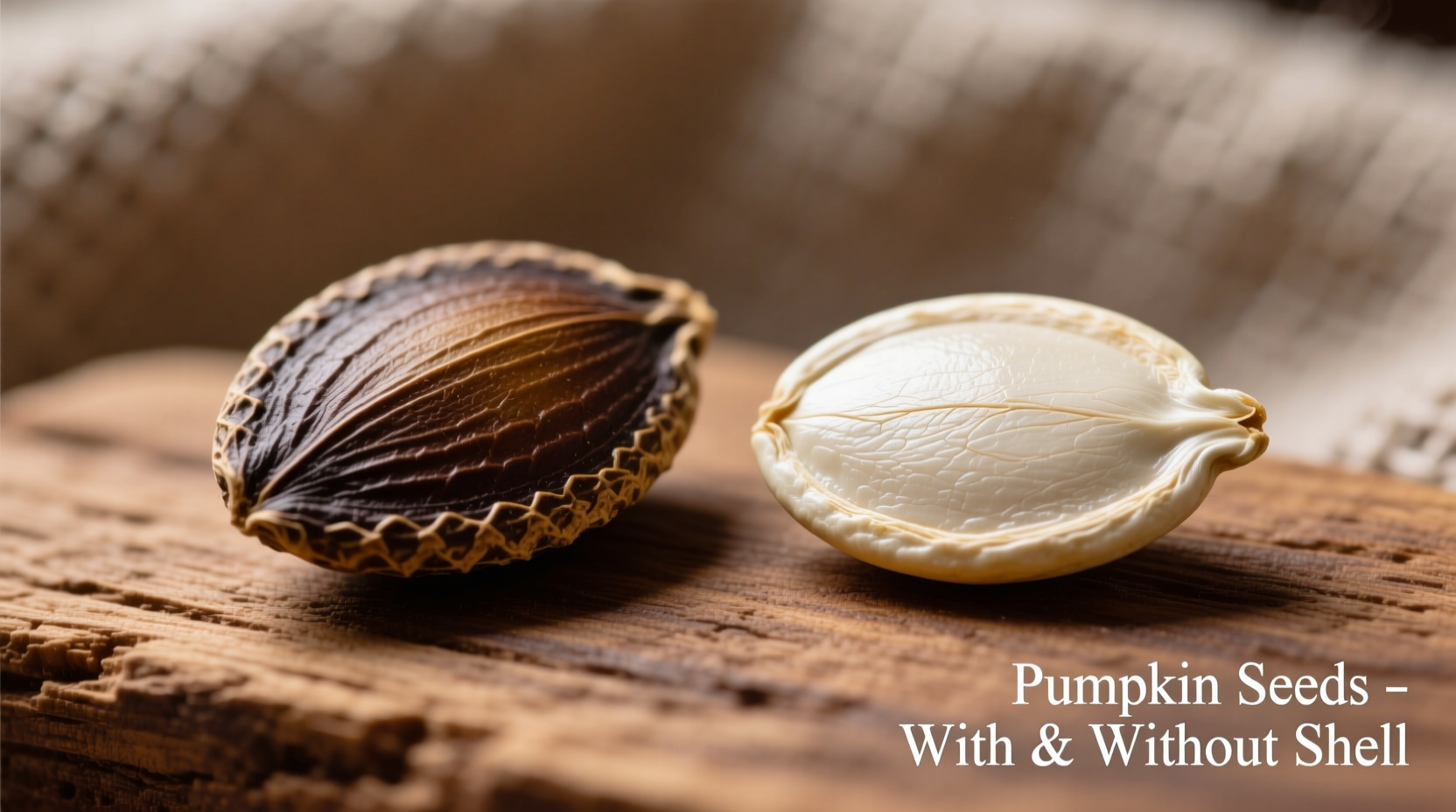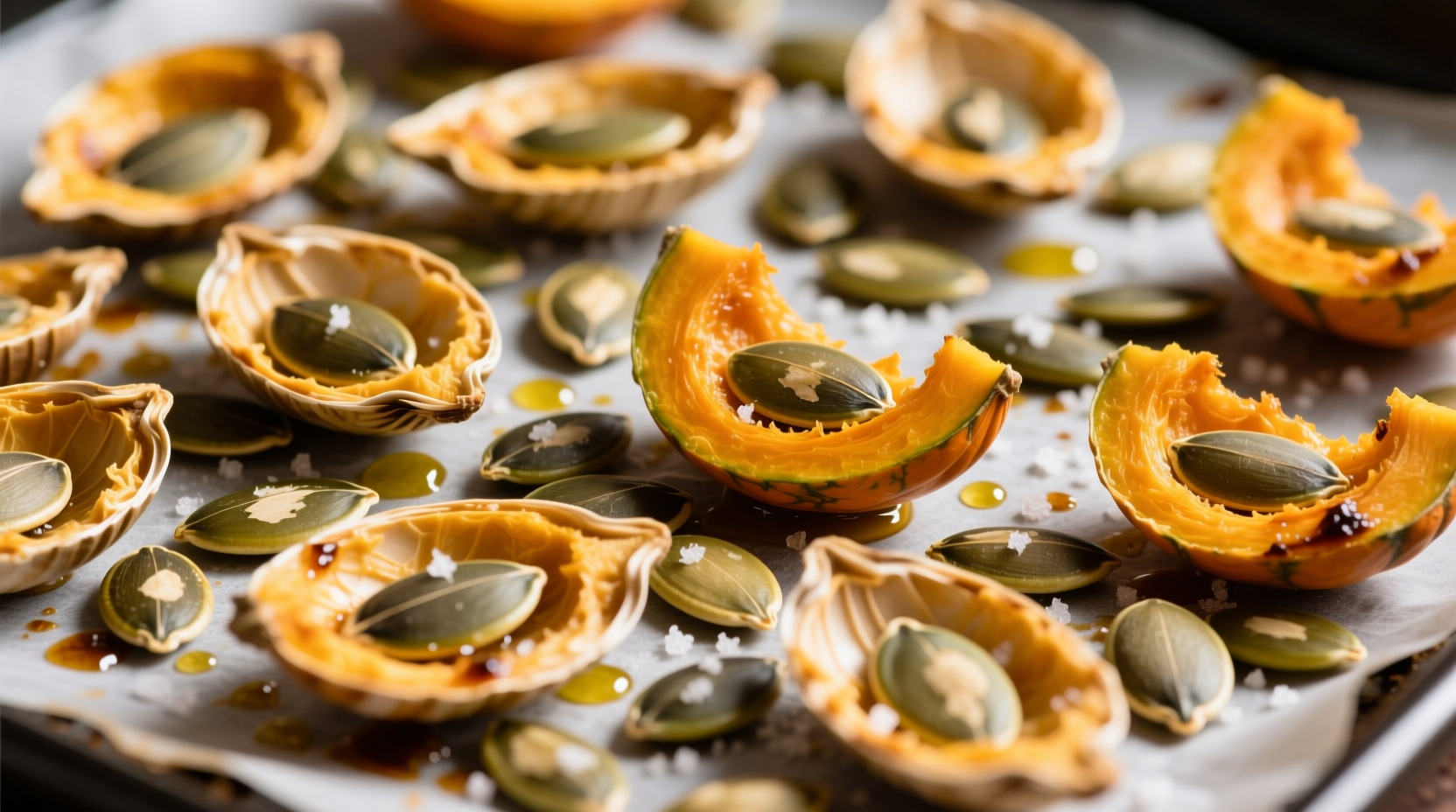Curious about whether those crunchy pumpkin seeds straight from the jack-o'-lantern can be enjoyed shell and all? You're not alone. Each fall, thousands of home cooks scoop out pumpkin seeds wondering if they should bother removing the white shells before roasting. The answer isn't simply yes or no—it depends on your digestive system, nutritional goals, and preparation technique. In this comprehensive guide, you'll discover exactly how to safely enjoy pumpkin seeds with their shells, understand the nutritional trade-offs, and learn professional preparation methods that maximize both flavor and health benefits.
Understanding Pumpkin Seed Anatomy
Pumpkin seeds, also known as pepitas when shelled, consist of two main components: the hard, white outer shell (hull) and the green inner kernel. The shell contains primarily fiber, while the kernel delivers most of the protein, healthy fats, and minerals. When harvested directly from pumpkins, these seeds come encased in their protective shells.

Digestibility Considerations: What Happens When You Eat the Shell
While pumpkin seed shells aren't toxic, their digestibility varies significantly among individuals. The tough cellulose structure of the shell passes through the digestive system largely intact, which provides dietary fiber but may cause discomfort for some people.
| Digestibility Factor | With Shell | Without Shell |
|---|---|---|
| Fiber Content (per 1 oz) | 5g | 1.7g |
| Digestive Comfort | May cause bloating in sensitive individuals | Generally well tolerated |
| Nutrient Absorption | Slightly reduced mineral absorption | Optimal mineral absorption |
| Preparation Time | Minimal (roast as-is) | Requires hulling before use |
According to research published in the Journal of Food Science and Technology, the high fiber content in pumpkin seed shells can benefit digestive health for most people, but those with conditions like diverticulitis or irritable bowel syndrome should exercise caution. The USDA National Nutrient Database confirms that whole pumpkin seeds contain approximately 5 grams of fiber per ounce compared to 1.7 grams in shelled seeds.
Nutritional Showdown: Shell vs. No Shell
Choosing whether to eat pumpkin seeds with or without their shells involves nutritional trade-offs. While the shells contribute valuable fiber, they also affect how your body accesses certain nutrients.
Shelled pumpkin seeds (pepitas) deliver more concentrated nutrition per serving since you're consuming only the nutrient-dense kernel. The shells contain phytic acid, which can bind to minerals like zinc and iron, slightly reducing their bioavailability. However, the shells themselves provide insoluble fiber that supports regular bowel movements.
For those seeking maximum nutritional benefit, consider this professional tip from culinary nutritionists: roast whole seeds with their shells, then gently crush them before eating. This breaks down the shell structure slightly, improving mineral absorption while still providing fiber benefits.
Professional Preparation Techniques for Shell-On Seeds
If you decide to enjoy pumpkin seeds with their shells, proper preparation makes all the difference in both taste and digestibility. Here's the method used by professional chefs:
- Clean thoroughly: Separate seeds from pumpkin pulp and rinse under cold water in a colander
- Soak (optional but recommended): Soak in salted water for 8-12 hours to soften shells and improve digestibility
- Dry completely: Spread on baking sheets and air-dry for 24 hours or use low oven temperature (170°F) for 1-2 hours
- Season wisely: Toss with minimal oil (1 tsp per cup of seeds) and your choice of seasonings
- Roast properly: Bake at 300°F for 35-45 minutes, stirring occasionally until golden brown
The soaking step is particularly important for shell-on seeds as it helps break down enzyme inhibitors and softens the hull, making them easier to digest. Food scientists at Cornell University's Department of Food Science note that this traditional preparation method has been used for centuries in Mesoamerican cuisine to maximize nutritional benefits while minimizing digestive discomfort.
Who Should Avoid Eating Pumpkin Seed Shells
While most people can safely consume pumpkin seeds with shells, certain individuals should exercise caution or avoid them altogether:
- People with digestive disorders like Crohn's disease or ulcerative colitis
- Those recovering from gastrointestinal surgery
- Individuals with a history of intestinal blockages
- Young children under age 5 (choking hazard)
The American Gastroenterological Association recommends that individuals with compromised digestive systems opt for shelled pumpkin seeds to avoid potential irritation from the fibrous shells. For healthy adults, moderate consumption of properly prepared shell-on seeds presents minimal risk.
Creative Ways to Enjoy Pumpkin Seeds With Shells
Don't let the shells limit your culinary creativity. Try these professional chef-recommended applications:
- Trail mix component: Combine with dried fruit and nuts for added crunch
- Breading alternative: Finely crushed shell-on seeds make excellent coating for fish or chicken
- Salad topper: Adds texture contrast to leafy greens and roasted vegetables
- Homemade granola: Incorporate into your favorite recipe for extra fiber
- Traditional Mexican mole: Authentic recipes often include whole pumpkin seeds
For those concerned about the shells affecting texture, try lightly crushing the roasted seeds with a rolling pin before using them in recipes. This maintains the fiber benefits while creating a more uniform texture that blends well with other ingredients.
Storage Tips for Maximum Freshness
Proper storage ensures your pumpkin seeds remain fresh and flavorful. Store roasted pumpkin seeds (with or without shells) in an airtight container:
- Room temperature: Up to 2 weeks
- Refrigerator: 2-3 months
- Freezer: 6-12 months
The high fat content in pumpkin seeds makes them susceptible to rancidity. For longest shelf life, store in the freezer and thaw only what you'll use immediately. Glass containers work better than plastic for maintaining freshness, as they prevent odor transfer and provide better moisture protection.
Final Verdict: To Shell or Not to Shell?
The decision to eat pumpkin seeds with their shells ultimately depends on your personal preferences, digestive tolerance, and nutritional goals. For most healthy adults, consuming pumpkin seeds with shells is perfectly safe and provides additional fiber. However, if you're seeking maximum nutrient density or have digestive sensitivities, shelled seeds might be preferable.
Remember that proper preparation—particularly soaking and thorough drying—makes shell-on seeds significantly more enjoyable and digestible. Whether you're scooping seeds from a Halloween pumpkin or buying them in bulk, understanding these nuances helps you make informed choices that align with your health goals and taste preferences.











 浙公网安备
33010002000092号
浙公网安备
33010002000092号 浙B2-20120091-4
浙B2-20120091-4